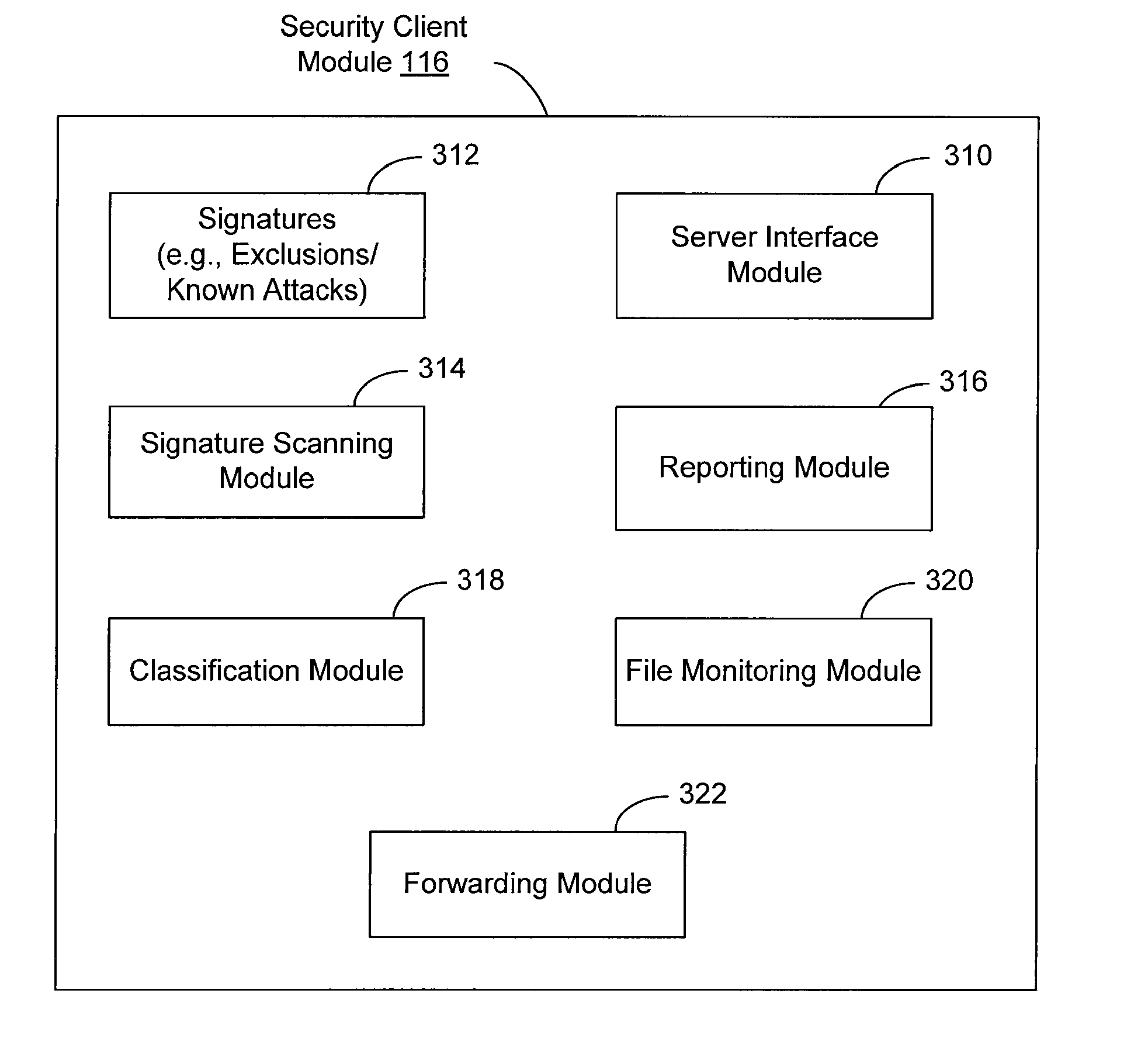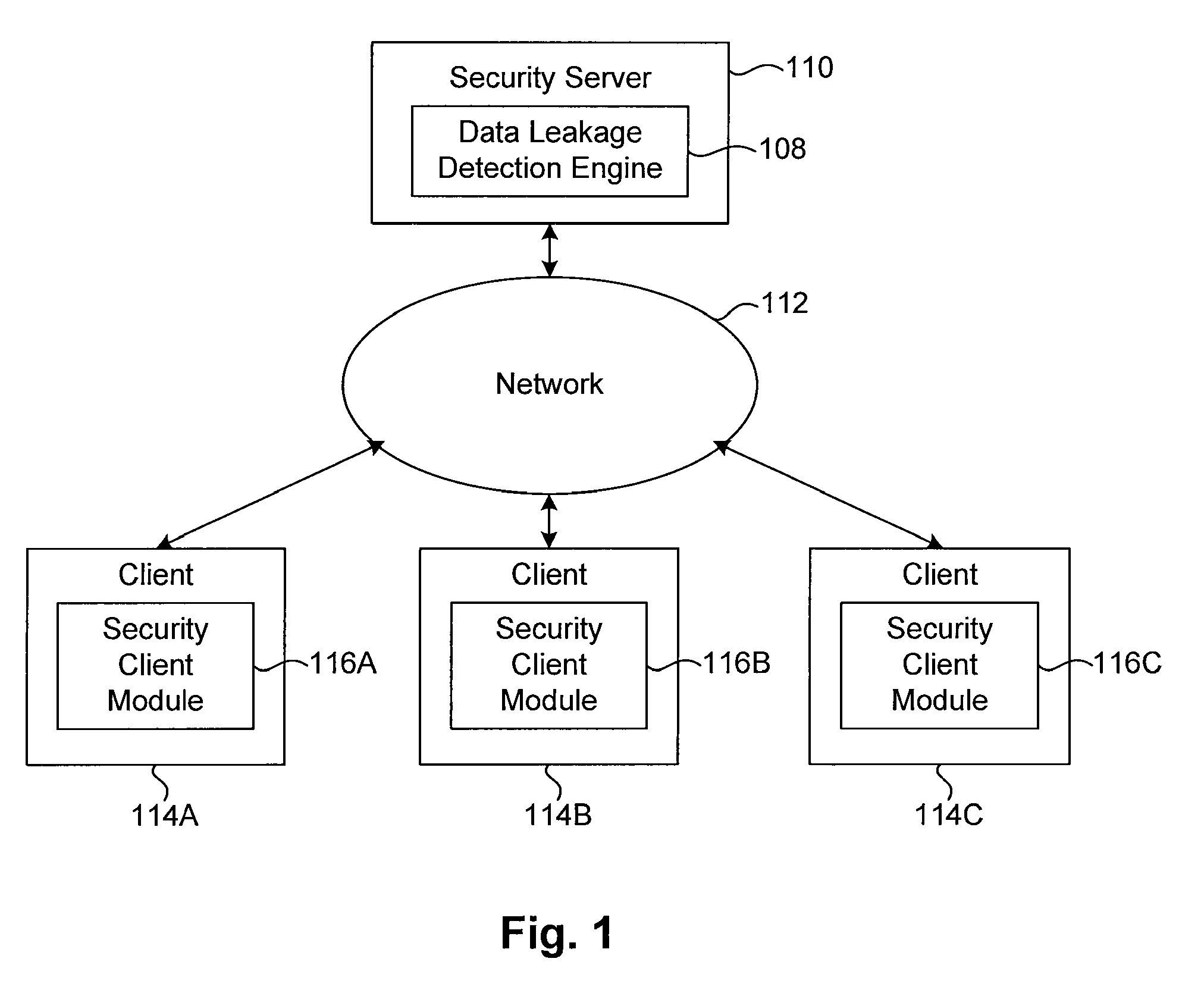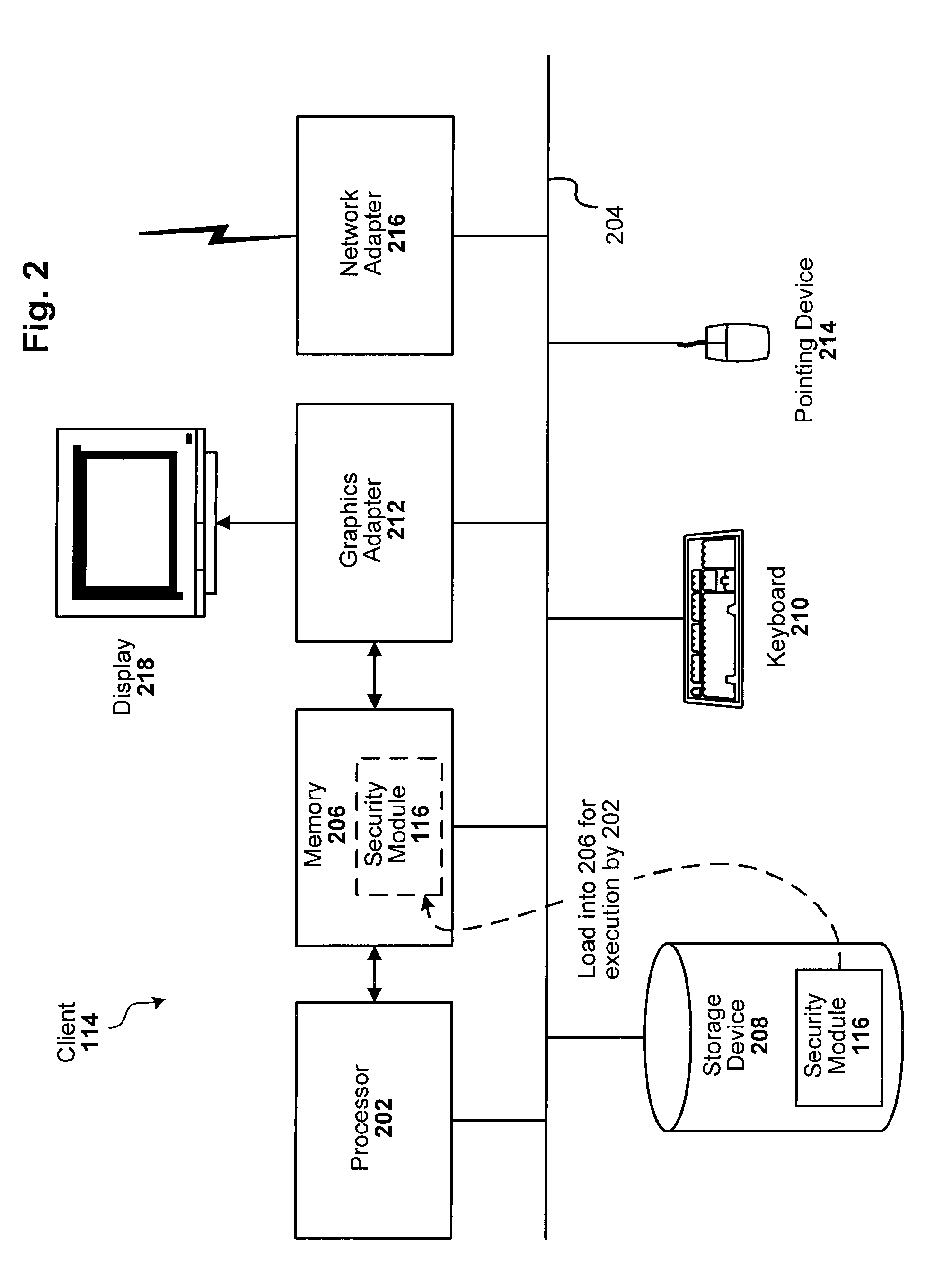Extrusion detection of obfuscated content
a technology of obfuscated content and extrusion detection, applied in the field of computer and network security, can solve the problems of sensitive data leakage, eds system cannot detect, and cannot scan compressed and/or encrypted files/content, and achieve the effect of preventing the extrusion of obfuscated sensitive conten
- Summary
- Abstract
- Description
- Claims
- Application Information
AI Technical Summary
Benefits of technology
Problems solved by technology
Method used
Image
Examples
Embodiment Construction
[0014]Techniques are disclosed that allow extrusion detection systems to detect and interrogate obfuscated content.
[0015]System Architecture
[0016]FIG. 1 is a block diagram of a computing environment configured in accordance with an embodiment of the present invention. As can be seen, the computing environment includes a security server 110 connected to a network 112. The security server 110 includes a data leakage detection engine 108. Also connected to the network 112 are one or more client computers 114, each of which includes a security client module 116. Alternative embodiments can be implemented within a single machine, such as within client 114 without interaction with server 110 (i.e., the data leakage engine 108 can also run on client 114).
[0017]The network 112 may be any type of communications network, such as a local area network (e.g., intranet), wide area network (e.g., Internet), or some combination thereof. Alternatively, the network 112 may be a direct connection betw...
PUM
 Login to View More
Login to View More Abstract
Description
Claims
Application Information
 Login to View More
Login to View More - R&D
- Intellectual Property
- Life Sciences
- Materials
- Tech Scout
- Unparalleled Data Quality
- Higher Quality Content
- 60% Fewer Hallucinations
Browse by: Latest US Patents, China's latest patents, Technical Efficacy Thesaurus, Application Domain, Technology Topic, Popular Technical Reports.
© 2025 PatSnap. All rights reserved.Legal|Privacy policy|Modern Slavery Act Transparency Statement|Sitemap|About US| Contact US: help@patsnap.com



